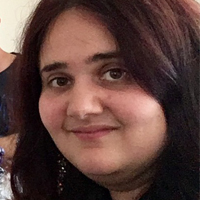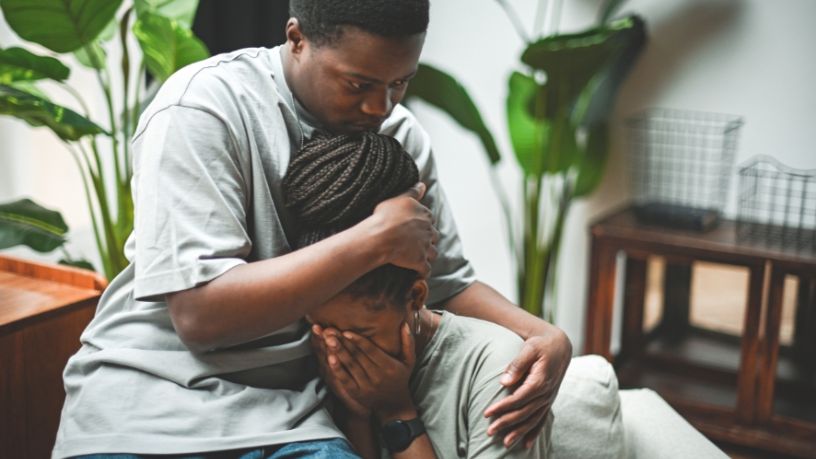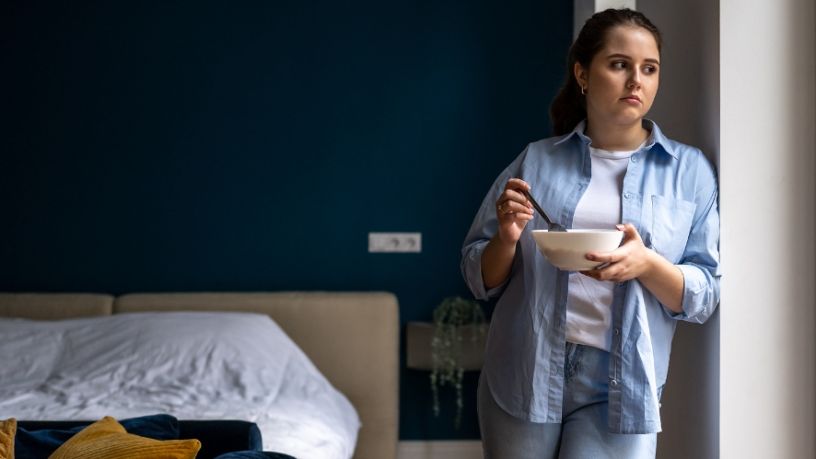Anxiety and depression both have an impact on your mood and feelings, and can also affect your physical health.
Key takeaways
Both conditions have common signs and symptoms you can be on the lookout for.
Anxiety and depression are commonly treated with therapy and medication, and there is plenty of professional support available online and over the phone.
With one in 5 Australians experiencing a mental health condition each year, chances are you know someone experiencing depression or anxiety, or perhaps you experience symptoms yourself.1
While they are 2 of the most common mental health concerns, they can affect people differently. Here’s a brief overview of what you might expect.
Anxiety versus depression: What's the key difference?
Depression and anxiety both relate to your mood and feelings and can affect you physically.
The difference between them comes down to the symptoms. Depression is a persistent feeling of sadness or hopelessness (though it can also show up in other ways, like feeling irritable or lacking energy). Anxiety involves feelings of fear or worry that are difficult to control.
We all experience feelings of anxiety and low mood from time to time. Symptoms can be different for everyone, and just because you experience some symptoms doesn’t mean you have an anxiety or depression disorder.
However, if your symptoms are affecting your everyday life, it may be worth a visit to your GP to find out more.2
Recognising the symptoms
Depression is defined by having a low mood and/or loss of interest or enjoyment in most activities for 2 weeks or longer. With depression, you might also experience:
- guilt
- helplessness
- feelings of worthlessness
- low self-esteem or low confidence
- thoughts of death, suicide or self-harm.
Anxiety is an umbrella term that covers a range of more specific conditions. The most common is generalised anxiety disorder (GAD).
When it comes to GAD, a person may experience excessive anxiety and worry on most days, and difficulty controlling these feelings, for 6 months or more. With GAD, you might also experience:
- feelings of being on edge
- restlessness
- irritability
- excessive worry about everyday things without an obvious logical cause.
The physical symptoms
On the physical side, there’s an overlap of symptoms for both depression and GAD. These include:
- fatigue
- muscle tension and aches
- headaches
- poor concentration
- being fidgety or unable to sit still
- difficulty sleeping.
With depression, you might also experience:
- weight changes, often caused by unusual changes in appetite
- being slower in your movements.
With GAD, you might also experience:
- hot or cold flushes
- dizziness
- dry mouth and difficulty swallowing
- bowel problems (such as an upset tummy or diarrhoea)
- tightness or pain in the chest
- a fast or racing heartbeat
- shortness of breath.
Keep in mind that any of these symptoms can point to signs of other problems with your physical health. So, it’s important to speak with your GP if you’re concerned.
Can you have anxiety and depression at the same time?
Around 50% of people with an anxiety disorder will also have depression, and it’s estimated that up to 85% of people with depression experience symptoms of anxiety.3
It’s also possible to have symptoms of both at a level that doesn’t lead to a diagnosis of either. This is called ‘mixed anxiety and depressive disorder’.
You can also be diagnosed with one of the conditions and have symptoms of the other, but at a level that isn’t severe enough to lead to a second diagnosis.
As diagnosis can’t ever fully capture someone’s personal experience, it’s important to think of yourself as unique when it comes to understanding these conditions.
How are anxiety and depression treated?
There’s lots of help available for anxiety and depression, with different types of support to choose from. For both, the 2 main treatment options are:
- psychological therapies. This involves talking through your thoughts and feelings with a qualified professional. For example, cognitive behavioural therapy aims to address the way your thoughts, feelings and behaviours interact
- medicines. There are a wide range of effective medications used for both depression and anxiety disorders. The most common are a type of antidepressants known as ‘selective serotonin reuptake inhibitors’ (SSRIs), though other medications can help too.
You’ll often find that treatment approaches combine both psychological therapies and medicines, tailored to the individual and their specific situation. Your doctor may also look at lifestyle issues.
How to get help
Anxiety and depression are very common conditions, and most of the time they’re very treatable.
If you or someone you know is struggling with some of the symptoms mentioned here, know that you’re not alone and help is available.
Contacting your GP is a great place to start. You can also reach out to some of the organisations listed below.
Resources
If yours or someone else’s life is in danger, dial 000 immediately.
Lifeline Australia offers 24/7 crisis support online and on the phone at 13 11 14.
Beyond Blue offers 24/7 mental health information and support online and on the phone at 1300 224 636.
13YARN offers a national crisis support line for First Nations People on 13 92 76. The support line is available 24/7.
1800Respect is a 24/7 support service for people experiencing domestic violence. You can find support, counselling and information online or on the phone at 1800 737 732.
PANDA (Perinatal Anxiety & Depression Australia) supports the mental health of parents and families online and on the phone at 1300 726 306.
MensLine is a counselling service for men. You can get 24/7 support online and on the phone at 1300 78 99 78.
QLife offers LGBTQIA+ peer support online and over the phone on 1800 184 527.
Are you in need of urgent support?
We've put together a list of services for free support that's relevant to where you live, and what you're going through.

At Bupa, trust is everything
Our health and wellbeing information is regularly reviewed and maintained by a team of healthcare experts, to ensure its relevancy and accuracy. Everyone's health journey is unique and health outcomes vary from person to person.
This content is not a replacement for personalised and specific medical, healthcare, or other professional advice. If you have concerns about your health, see your doctor or other health professional.
1Australian Government, Australian Institute of Health and Welfare. (2024). Prevalence and impact of mental illness. Australian Government, Australian Institute of Health and Welfare.
2Healthdirect. (2022). Anxiety. Healthdirect.
3Hirschfeld, R. M. (2001). The comorbidity of major depression and anxiety disorders: recognition and management in primary care. Primary Care Companion, Journal of Clinical Psychiatry, 3(6), 244-254.
You might also like...
A step-by-step guide to managing panic attacks
Panic attacks can happen at any time. Discover practical calming techniques and breathing exercises to manage a panic attack and ease your symptoms.
Orthorexia: Taking healthy eating to the extreme
We look at orthorexia, an obsession with certain so-called ‘healthy’ diets, which can lead to nutritional deficiencies or even malnutrition.
6 self-care tips to reduce anxiety this Christmas
The holiday season can be a difficult time for many of us, with grief, loneliness and stress overshadowing the festivities. Don’t let anxiety take over this Christmas with these tips.
What's the difference between a psychiatrist and a psychologist?
There are a lot of professional options when it comes to caring for your mental health, but do you know what kind of practitioner is right for your needs?





